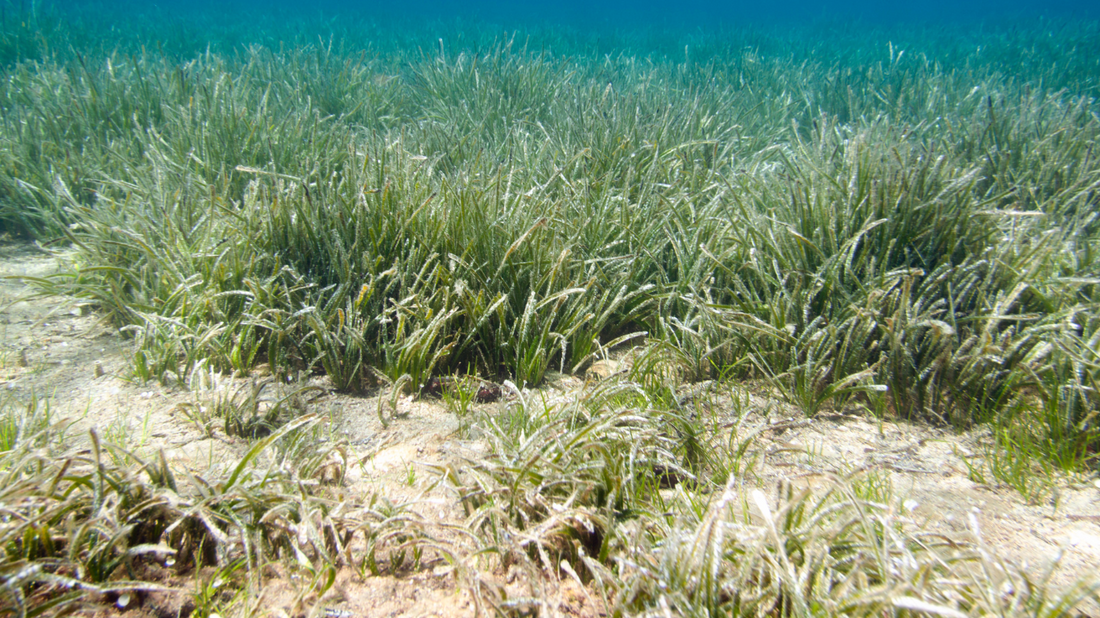
Conserving Our Seagrass Meadows
Partager
Seagrass ecosystems are invaluable components of coastal environments, playing a crucial role in maintaining marine biodiversity and supporting numerous species. In Florida's waters, seagrass beds face a myriad of threats, ranging from human activities to the impacts of climate change. The Florida Keys ecosystem includes 1.5 million acres of seagrass meadows, making up one of the largest habitats in the world. Understanding the significance of seagrass conservation is essential for preserving these vital habitats and ensuring the health of marine ecosystems.
The Vital Role of Seagrass Ecosystems
Underwater Meadows: Understanding Seagrass Habitats
Picture a lush underwater meadow, swaying gently with the ebb and flow of the tides. This is the world of seagrass habitats, vital ecosystems that are often overlooked but play a crucial role in marine environments.
Key Functions of Seagrass in Marine Environments
Seagrass may not be as flashy as coral reefs, but they are unsung heroes of the ocean. These plants provide essential habitat for a variety of marine life, from tiny seahorses to majestic manatees. They also help stabilize sediment, improve water quality, and even absorb carbon dioxide.
Threats Facing Seagrass in Florida Waters
Impacts on Seagrass Health
Unfortunately, human activities like boat propeller damage, pollution, and coastal development pose significant threats to seagrass health in Florida waters. As these habitats decline, so too does the biodiversity they support. Climate change adds another layer of threat to seagrass survival. Rising sea temperatures, ocean acidification, and extreme weather events all take a toll on these delicate ecosystems.
Benefits of Seagrass Conservation
Environmental Importance of Seagrass Beds
Conserving seagrass isn't just about saving pretty underwater landscapes—it's about protecting biodiversity, improving water quality, and supporting the overall health of marine ecosystems. Seagrass beds are like the kidneys of the ocean, filtering out pollutants and providing crucial habitat.
Economic Value of Seagrass Ecosystems
Beyond their environmental benefits, seagrass ecosystems also have economic value. They support fisheries, tourism, and coastal protection efforts, making them valuable assets that need to be preserved for future generations.
Strategies for Protecting Seagrass Habitats
Restoration Techniques for Seagrass Recovery
When seagrass habitats are damaged or destroyed, restoration efforts can help bring them back to life. Planting seagrass seeds, reducing pollution, and implementing habitat restoration projects are all key strategies in helping seagrass recover. Prevention is often the best cure, so adopting sustainable practices to protect seagrass habitats is crucial. By taking action now, we can ensure that these vital ecosystems continue to thrive for years to come.
Community Engagement in Seagrass Conservation
When it comes to protecting seagrass in Florida, community engagement plays a crucial role. Local initiatives are key in preserving these underwater meadows. Whether it's organizing beach clean-ups, participating in restoration projects, or spreading awareness, every small effort counts in safeguarding seagrass habitats.
Local Initiatives for Seagrass Preservation
Communities along Florida's coast are taking action to protect seagrass beds. From volunteer-driven cleanup events to community-led restoration projects, locals are actively involved in preserving these vital ecosystems. Supporting and participating in these initiatives is a great way to contribute to seagrass conservation efforts.
Educational Outreach on Seagrass Awareness
Educational outreach programs play a crucial role in increasing awareness about the importance of seagrass. By educating the public about the benefits of these underwater plants and the threats they face, we can inspire more people to get involved in conservation efforts. So, let's dive into spreading the word and helping seagrass thrive!
Research and Monitoring Efforts in Seagrass Conservation
Research and monitoring efforts are vital for understanding and protecting seagrass ecosystems in Florida. Scientific studies provide valuable insights into seagrass ecology, while technological innovations offer new ways to monitor and manage these underwater habitats effectively.
Technological Innovations for Seagrass Monitoring
Technological advancements are revolutionizing the way we monitor seagrass habitats. From drone surveys to underwater sensors, innovative tools enable more efficient and accurate monitoring of seagrass populations. Embracing these technologies enhances our ability to track changes in seagrass health and respond swiftly to conservation challenges. Let's harness the power of innovation to safeguard seagrass for generations to come.